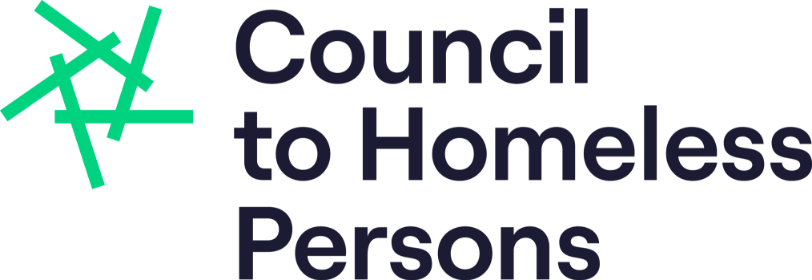Breaking the Cycle: Addressing Homelessness and Recidivism for Formerly Incarcerated Men Through Enhanced Housing Pathways
18.11.24
by Marcella Acone – Program Manager, Housing Pathway Program Prisons, The Salvation Army Australia Territory
This article was originally published in the July 2024 edition of Parity magazine. Learn more about Parity including how to access full editions.
The challenges faced by formerly incarcerated men in securing stable housing and reducing recidivism are profound and multifaceted. Homelessness and repeat offences are deeply intertwined issues that perpetuate a cycle of instability and marginalisation. Addressing these challenges requires innovative approaches and comprehensive support systems that go beyond traditional methods.
The reintegration challenges faced by formerly incarcerated men are compounded by the absence of targeted assistance, leading to a higher risk of recidivism and prolonged homelessness. Addressing these gaps requires a cooperative effort to develop and fund programs specifically designed to support men transitioning from prison, ensuring they have access to the resources necessary for a stable and successful re-entry into society. One such initiative is the Enhanced Housing Pathways Program, which provides comprehensive support and stable housing solutions, particularly for those leaving prison and facing multifaceted reintegration challenges.
In 2021-22, 2.4 per cent of adults using specialist homelessness services had been in prison, youth detention, or immigration detention, with the majority being men (54 per cent) aged 20-44 (59 per cent). (1) Nearly half of prison releases (45 per cent) planned to stay in short term or emergency accommodation, and 2.8 per cent expected to sleep rough upon release. Additionally, over two in five (43 per cent) prison entrants reported being homeless, including those in short term or emergency accommodation, up to four weeks before imprisonment. (2) For this reason, early intervention is crucial to break the cycle of homelessness for men leaving prison. This involves rapid rehousing and ensuring that homelessness services address their specific needs.
At present, direct releases from prison can happen at any time of the day. Upon release, individuals often lack their pre-incarceration belongings, leaving them at a significant disadvantage. They typically exit with just the clothes on their backs, if they still fit, and a phone, if they’re fortunate, but usually without any credit. Commonly, they have no identification, toiletries, or money, all the necessities we often take for granted.
If released after business hours, they have nowhere to go and are left to navigate their next housing steps alone and/or dependent on the already overwhelmed After Hours Service. If they manage to reach an Access Point, they might be provided with emergency accommodation for no more than one to two nights or have sought a rooming house, which is often overpriced, unsuitable to their needs, unstable, unhygienic, and lacking basic bedding.
Feedback from residents highlights several significant issues, including:
Theft of personal belongings:
Residents report that when they try to stay in a rooming house, their food and toiletries are often stolen. This forces them to carry all their belongings whenever they leave the house.
Encounters with antisocial behaviour:
Residents have encountered individuals with antisocial behaviours and lifestyles. Attempts to avoid these individuals often result in conflict and additional legal complications.
Disruptions during the night:
Many residents mention frequent disruptions throughout the night caused by loud noises and harassment. This makes it difficult to get a full night’s rest.
Employment-related targeting:
When residents secure employment, they may become targets for money. As a result, many prefer the routine, stability, and security of returning to prison, or they turn to rough sleeping instead.
Observations of challenges faced emphasises the critical importance of support for successful reintegration.
Interpreting services:
Address the needs of non-English speaking participants by providing quality interpreting services.
Legal education:
Educate participants on understanding legal matters and court conditions.
Literacy considerations:
Factor in the potential for low literacy skills among participants.
Veteran support:
Gain insight into the unique needs of Department of Veteran Affairs (DVA) participants, who may have undiagnosed mental health issues or acquired brain injuries (ABI).
Substance abuse diversion:
Focus on diverting participants from drug use with specialised referrals.
Encouraging self-care:
Promote self-care among participants through positive lifestyle programs.
Cultural and sexual diversity:
Recognise and address challenges related to cultural and sexual diversity to ensure inclusive support.
The Enhanced Housing Pathways (EHP), introduced in 2016, explored innovative approaches to support people exiting prison at risk of homelessness. The aim is to assist those capable of sustaining private rentals and living independently, while connecting others to services to achieve broader goals beyond housing support. What sets EHP apart is its tailored support, designed to facilitate the successful reintegration of individuals back into community. It is geared toward supporting participants to navigate through systemic barriers, aiming for employment and education to achieve financial independence, selfcare, improved life skills, and stable, long-term housing.
EHP uses a participant-centred, trauma-informed approach inspired by social and community inclusion, and holds to a high value everyone’s right to a home. The focus on personal development, employment coaching, and educational opportunities, with the first step being to facilitate and coordinate linkages to the correct services is a critical aspect of reintegration, which in turn enables them to care for their families and contribute positively to the community.
A 2018 study on recidivism and reintegration (3) highlights the importance of welcoming returning citizens back into the community and ensuring they are prepared for reintegration. In Victoria, 37per cent of prisoners released during 2019-20 returned to prison within two years. This high recidivism rate emphasises the need for comprehensive support systems.
Our approach for tackling this challenge focuses on investing in individuals at three crucial stages: pre-release, post-release, and a short period after achieving their goals. Ideally, support should be flexible and available for as long as necessary, providing continuous assistance in areas such as education, employment coaching, financial literacy and counselling. This would allow individuals to re-engage with support services without needing a new assessment or another intake process, promoting relationships built on authenticity and practicality.
Supporting individuals released from prison requires a multifaceted approach that addresses their immediate needs and provides long term holistic support. EHP exemplifies this approach by exploring stable housing, employment and educational opportunities, with personalised support. By focusing on selfcare, life skills, and continuous engagement, we can help reduce recidivism, mitigate hidden homelessness and promote successful reintegration, ultimately benefiting individuals, families, and communities.
Reintegration and Recovery Journey
This case study explores the journey of L, an East Timorese man diagnosed with schizophrenia and drug induced psychosis. It details the challenges he faced due to his mental health condition and substance abuse, his subsequent estrangement from family and friends, and the legal consequences of his actions. The study highlights the interventions and support systems that facilitated his recovery and reintegration into society. Through L’s story, we examine the impact of comprehensive support services and the importance of understanding and addressing the underlying issues contributing to his struggles.
L is an East Timorese man diagnosed with schizophrenia and drug induced psychosis. His life took a tremendous turn in recent years when friends introduced him to crystal methamphetamine. This period marked the beginning of L’s estrangement from family and friends due to his increasingly aggressive behaviour. Additionally, L ceased taking his prescribed medication for his mental health condition, which led to the loss of his job and an Intervention Order (IVO) being placed against him by his parents. L violated this IVO multiple times, resulting in incarceration.
Coming from a family that values community status and takes pride in the success of its children, L’s diagnosis as a young adult was perceived as a failure. His parents, not understanding his mental health condition, were unsupportive, particularly when his academic performance declined. This lack of understanding and support further isolated L.
The primary challenge for L was the IVO, which prohibited contact with his family. L struggled to comprehend the restrictions, and his mental health issues, compounded by drug use, led to repeated breaches of the IVO and subsequent incarceration.
During his incarceration, L abstained from drug use and received appropriate medication for his mental health condition. He participated in rehabilitation programs and was placed on a Community Corrections Order (CCO) upon release. The Magistrate mandated fortnightly court appearances.
Upon release, L was referred to EHP for assistance with long-term housing and material aid. He was also linked with mental health and alcohol and other drug (AOD) services, with progress monitored by the CCO worker. Since his release, L has maintained sobriety, adhered to the IVO, and engaged in his CCO requirements. He now resides in shared accommodation and has secured employment.
To sustain his recovery, it is crucial for L to maintain connections with AOD and mental health services. Counselling would help him understand his estrangement from his family and explore ways to mend these relationships over time. L has expressed a desire to save money for a new car and secure long-term housing, goals he hopes to achieve with continued support from his EHP worker.
L’s journey highlights the importance of comprehensive support systems in facilitating reintegration and recovery for individuals with complex needs. Continuous engagement with rehabilitation services and supportive networks are essential for L’s sustained progress and future stability.
Endnote
1. Australian Institute of Health and Welfare, Specialist Homelessness Services Collection Data Cubes 2011–12 to 2022–23, https://www.aihw.gov.au/reports/homelessness-services/shsc-data-cubes/contents/data-cubes
2. Ibid.
3. Willis M 2018, Supported Housing for Prisoners Returning to the Community: A Review of
the Literature, Research Report 07, Australian Institute of Criminology,
https://www.aic.gov.au/sites/default/files/2020-05/rr07_supported_housing_300418_0.pdf
This article was originally published in Parity magazine. Learn more about Parity including how to access full editions.

